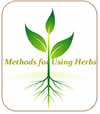Christmas herbal traditions

The Three Magi
Allspice * Boswellia (Frankincense) * Cardamom * Cinnamon * Clove * Elderberry * Myrrh * Peppermint * Pine * Rosemary * Saffron *
The earliest herbal stories of Christmas are rooted in the desert of the Holy Land, and begin with the the wisemen bearing gifts of gold, myrrh and frankincense to the newborn child.
|
| |||
|---|---|---|---|
 Bulk Herbs |
 Bitters & Syrups |
 Herbal Extracts |
 Herbal Health |
Christmas Remedies
The earliest herbal stories of Christmas are rooted in the desert of the Holy Land, and begin with the the wisemen bearing gifts of gold, myrrh and frankincense to the newborn child. Other holiday traditions, especially those of the Northern regions of Europe are passed down from times before when the people endured the dark days of midwinter on the hope of eternal rebirth of the Sun and Earth. Many of these stories and legends of miraculous herbs and plants were folded into the new Christmas stories, and all were passed down to us from mother to child, generation to generation, to form our own unique Christmas traditions. During the holidays we enjoy decorating pine trees, hanging branches of mistletoe in strategic places, and the resinous scent of aromatic incense, without giving much thought to how and why these herbal traditions started, or the very real medicinal benefits of these holiday herbs, plants and oils.

The aroma of cinnamon evokes memories of Christmas kitchens - warm, spicy and intensely fragrant. I cannot imagine celebrating the Christmas seasonal holidays without cinnamon and other spices. Cinnamon makes a great tasting tea alone or added to almost any herbal tea blend for it's spicy, warm properties. The addition of honey brings out the organic sweetness of the cinnamon and complements the antibiotic healing for colds, sore throats, and other viral infections. Grinding cinnamon chips into powder yourself is the best way to ensure the freshest cinnamon. Store in air tight glass jars to seal in the goodness. Remember that the cinnamon powder sold in the grocery is much to old to have any medicinal value. Cinnamon has an energizing and uplifting effect on mood. Cinnamon oil used in essential oil blends brings holiday cheer to your home or workspace.
Kissing under the mistletoe is one of the most widely known holiday traditions. Mistletoe also figures in a Scandinavian legend of Balder, god of Peace, who was slain with an arrow of mistletoe. He was restored to life, and mistletoe was then given into the keeping of the goddess of Love, and it was ordained that everyone who passed under it should receive a kiss, to show that the branch had become an emblem of love, and not of hate. Trained herbal practitioners make use of mistletoe Phoradendron flavescens teas to slow the pulse and lower blood pressure, treat arthritic pain and snoring.
Without parsley, sage, rosemary and thyme stuffing would be nothing more than stale and soggy breadcrumbs, (and folk music would lose the lilting melody of "Scarborough Fair"). Though my herb garden has been harvested, dried and stored away, a visit to my backyard garden here in the South finds these indispensable herbs still green enough to clip some fresh for the holiday meal. You can never seem to grow enough of these staples and I never have run out of uses for them. These are the true herbs of winter for me, not only in the kitchen but as herbal medicines that are especially potent against the chills of winter.

The tradition of using sage in the culinary arts of Thanksgiving began with the early American colonists. They also depended upon sage a valuable remedy for the colds and fevers that came with the harsh New England winters. There is something very grounding and relaxing about a hot cup of sage tea with lemon, sipped slowly while the winter holds court outside your warm home. The cold and sniffles you felt coming on melt away in the fragrant steam. Sage has excellent antibacterial and astringent properties, which explain the herbs effective use in gargles for sore throats.

Scotch pine is one of the most popular choices for Christmas trees. The invigorating pine scent the pervades the home when the tree is brought indoors is perhaps the signature aroma of the holiday season, a tradition that predates Christmas. Wreaths and pine cone displays can take the place of a bulky tree if you like, and a few drops essential oil of pine can freshen the scent. Pine has a long history of use as a pain reliever in arthritis, aches, pains and sore muscles. Pine needle oil is used as a component in cough and cold medicines, vaporizer fluids, nasal decongestants, and analgesic ointments. Pine is combined with eucalyptus and peppermint oils for acute cold and nasal inflammation.
Looking for something you can read offline? Join our mailing list and get a free copy of Methods for Using Herbs. This free handbook includes instructions on how to make basic herbal preparations at home. It covers making herbal teas, herb infused oils and balms, tinctures, and more.






















